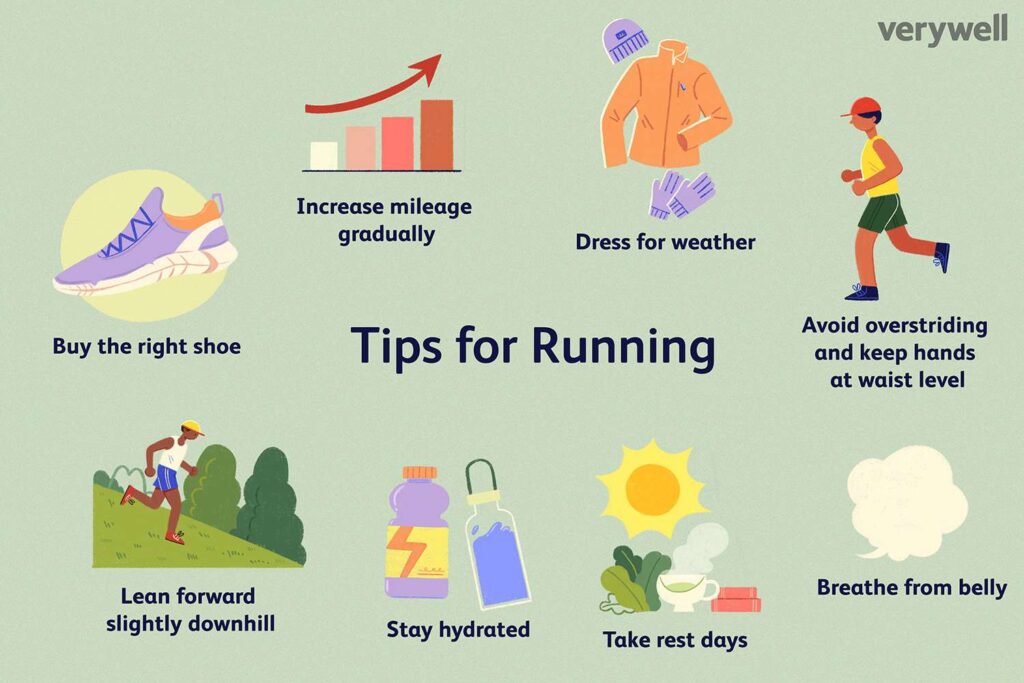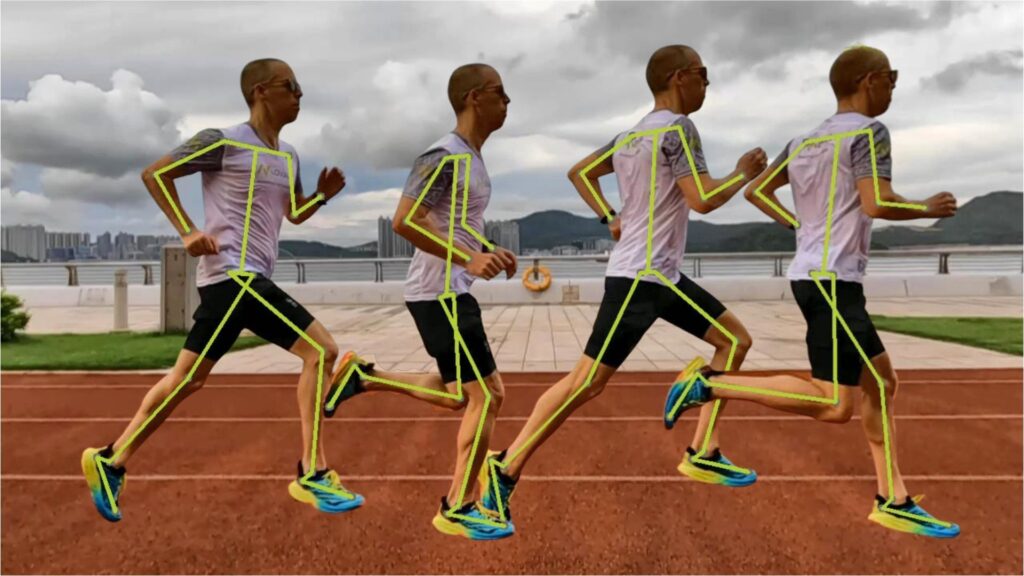Running, at its core, is a simple activity: putting one foot in front of the other. However, transforming that simple act into a fast, efficient, and injury-free endeavor requires attention to form. Optimal running form maximizes your power output, minimizes energy expenditure, and reduces the risk of injury. This guide breaks down key elements of good running form, providing actionable advice and exercises to help you unlock your running potential.

I. Understanding the Principles of Efficient Running
Before diving into specific techniques, it’s crucial to understand the underlying principles that guide efficient running form:
- Posture: A strong, aligned posture is the foundation of good running. Think of it as the stable core from which all movement originates.
- Cadence: Cadence refers to the number of steps you take per minute (SPM). A higher cadence is generally more efficient, reducing overstriding and ground contact time.
- Ground Contact Time (GCT): This is the amount of time your foot spends in contact with the ground. Minimizing GCT allows for quicker turnover and reduces braking forces.
- Vertical Oscillation: This refers to the amount your body moves vertically with each stride. Excessive vertical movement wastes energy and can contribute to fatigue.
- Forward Lean: A slight forward lean from the ankles, not the waist, helps engage the core and promotes momentum.
- Relaxation: Tension is the enemy of efficiency. Relaxed shoulders, arms, and face contribute to a more fluid and economical running style.

II. Head to Toe: A Detailed Look at Running Form Components
Let’s examine each part of the body and its role in achieving optimal running form:
A. Head and Neck:
- Gaze: Look ahead, not down. Your gaze should be directed towards the horizon, a comfortable distance in front of you. This helps maintain a neutral head position and encourages proper spinal alignment.
- Relaxation: Keep your jaw relaxed and your neck loose. Avoid clenching your teeth or hunching your shoulders towards your ears.
- Head Position: Maintain a neutral head position, avoiding excessive tilting forward or backward. Imagine a string pulling you up from the crown of your head.
B. Shoulders and Arms:
- Relaxation: This is paramount. Tense shoulders restrict breathing and waste energy. Imagine shaking out any tension from your shoulders before and during your run.
- Arm Swing: Your arms should swing forward and backward, not across your body. This motion helps propel you forward and provides balance.
- Elbow Angle: Aim for an approximate 90-degree angle at your elbow. Avoid excessive arm swing, which can lead to unnecessary upper body movement.
- Hand Position: Keep your hands relaxed and unclenched. Imagine holding a potato chip – you want to hold it without crushing it.
- Shoulder Alignment: Keep your shoulders square and avoid hunching or rounding them.
C. Core and Torso:
- Core Engagement: Engage your core muscles to maintain a stable and upright posture. This doesn’t mean sucking in your stomach, but rather a subtle activation of your abdominal muscles.
- Torso Angle: Maintain a slight forward lean from the ankles, not the waist. This engages your core and allows gravity to assist your forward momentum.
- Avoid Excessive Rotation: Minimize excessive torso rotation. Your hips and shoulders should generally face the direction you are running.
D. Hips and Glutes:
- Hip Extension: Fully extend your hip at the back of each stride. This allows you to generate more power and propulsion.
- Glute Activation: Engage your gluteal muscles to drive your stride. Weak glutes can lead to inefficient running and an increased risk of injury.
- Avoid Overstriding: Overstriding occurs when your foot lands too far in front of your body. This creates a braking force and reduces efficiency. Hip extension helps prevent overstriding.
E. Legs and Feet:
- Foot Strike: While midfoot strike is often touted as ideal, foot strike is highly individual and can vary depending on speed and terrain. Focus on landing under your center of gravity, rather than reaching out with your foot.
- Knee Lift: Aim for a moderate knee lift. Excessive knee lift can be inefficient, while insufficient knee lift can limit your stride length and power.
- Ankle Flexibility: Good ankle flexibility is crucial for efficient running. Tight ankles can restrict range of motion and lead to compensatory movements that increase the risk of injury.
- Cadence: As mentioned earlier, aim for a higher cadence (around 170-180 SPM). This can be achieved by taking shorter, quicker steps.
- Ground Contact Time: Minimize the amount of time your foot spends on the ground. A higher cadence and efficient mechanics will naturally reduce GCT.

III. Drills and Exercises to Improve Running Form
The following drills and exercises can help you improve your running form and develop the necessary strength and flexibility:
A. Warm-up Drills:
- Walking Lunges: Improves hip flexor mobility and glute activation.
- Leg Swings (Forward and Sideways): Increases range of motion in the hips and hamstrings.
- Butt Kicks: Improves hamstring flexibility and warms up the posterior chain.
- High Knees: Improves hip flexor strength and warms up the lower body.
- Ankle Circles: Improves ankle mobility.
B. Form-Focused Drills:
- A-Skips: Focus on driving the knee up high and engaging the core.
- B-Skips: Similar to A-skips, but with a more pronounced extension of the leg forward.
- Bounding: Exaggerated strides that emphasize power and propulsion.
- Fast Feet: Quick, light steps that focus on increasing cadence.
- Strides: Short bursts of fast running (50-100 meters) that allow you to practice efficient form at a faster pace.
C. Strength Training Exercises:
- Squats: Strengthens the quads, glutes, and hamstrings.
- Lunges: Improves single-leg strength and stability.
- Deadlifts: Strengthens the entire posterior chain, including the glutes, hamstrings, and back.
- Plank: Strengthens the core muscles.
- Side Plank: Strengthens the obliques and improves core stability.
- Glute Bridges: Strengthens the glutes and hamstrings.
- Calf Raises: Strengthens the calf muscles.
D. Flexibility and Mobility Exercises:
- Hamstring Stretches: Improves hamstring flexibility, which can help prevent overstriding.
- Hip Flexor Stretches: Improves hip flexor mobility, which can improve hip extension.
- Calf Stretches: Improves calf flexibility, which can improve ankle mobility.
- Ankle Mobility Exercises: Exercises such as ankle circles and dorsiflexion stretches.

IV. Tips for Implementing Changes to Your Running Form
- Start Slowly: Don’t try to change everything at once. Focus on one or two aspects of your form at a time.
- Record Yourself: Video yourself running and analyze your form. This can help you identify areas for improvement.
- Seek Expert Advice: Consider working with a running coach or physical therapist who can assess your form and provide personalized feedback.
- Listen to Your Body: Pay attention to any pain or discomfort. If you experience pain, stop running and consult with a medical professional.
- Be Patient: Improving your running form takes time and effort. Don’t get discouraged if you don’t see results immediately.
- Consistency is Key: Practice your form drills and strength training exercises regularly to see the best results.
- Focus on Feeling: Pay attention to how your body feels as you run. Focus on running smoothly and efficiently.
- Run on Different Surfaces: Running on different surfaces, such as trails and grass, can help you develop a more adaptable and resilient running form.

V. The Role of Footwear
While not directly related to form itself, footwear plays a significant role in your comfort and performance. Wearing the right shoes can help you run more efficiently and reduce the risk of injury.
- Get Fitted: Visit a specialty running store and have your gait analyzed. This will help you determine the best type of shoe for your foot type and running style.
- Consider Cushioning and Support: Choose shoes that provide adequate cushioning and support for your needs.
- Replace Your Shoes Regularly: Running shoes lose their cushioning and support over time. Replace your shoes every 300-500 miles.
VI. Advanced Considerations
- Running on Different Terrain: Adjust your form slightly when running uphill, downhill, or on uneven terrain. Uphill running requires more knee lift and a shorter stride, while downhill running requires a slight lean back and controlled steps.
- Running at Different Speeds: Your form may change slightly as you increase your speed. Focus on maintaining good posture and efficient mechanics, regardless of your pace.
- Fatigue: Your form may deteriorate as you become fatigued. Pay attention to your posture and stride length as you get tired. Consider incorporating rest periods into your runs to maintain good form.
PERFECT RUNNING FORM – 5 Tips for Running Faster Pain Free
Conclusion
Improving your running form is an ongoing process that requires attention to detail, consistent practice, and a willingness to adapt. By understanding the principles of efficient running, focusing on key form components, and incorporating targeted drills and exercises into your training, you can run faster, more efficiently, and with a reduced risk of injury. Remember to be patient, listen to your body, and enjoy the journey. Running with improved form isn’t just about speed; it’s about unlocking your potential and enjoying the process even more.
FAQ
How can I improve my running speed and form?
How can I improve my running efficiency?
9 Tips to Improve Running Efficiency.
Cover the Basics. …
Train for Sport-Specific Metabolic Efficiency. …
Enhance Your Aerobic Capacity. …
Don’t Neglect (Lower-Body) Strength Training. …
Stabilize Your Hips. …
Mobilize Your Ankles. …
Lean In—Literally.
How can I improve my running speed plan?
What exercises help run faster?
How do I get better at speed running?
Interval training.
Add sprints into your long runs.
Choose lightweight running shoes and gear.
Skipping rope workouts.
Build your strength.